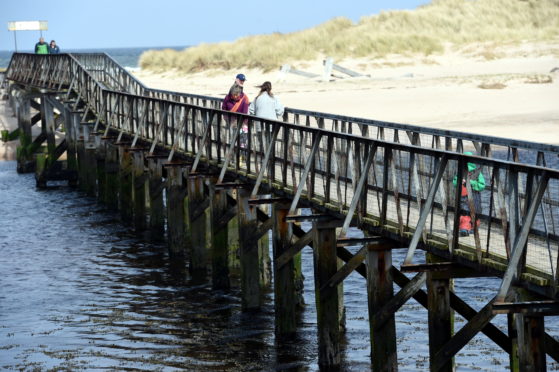Campaigners in a Moray town have appealed for the public to offer their views on the best way to preserve a historic seaside landmark.
Fears have been raised that the bridge leading to Lossiemouth’s East Beach could eventually be forced to close if it is allowed to continue to fall into disrepair.
The Community Development Trust in the town has now drawn up three options to save the link to the dunes, including repairing the 101-year-old bridge or building a new crossing in its place.
The third possibility is constructing a new bridge from the esplanade on Clifton Road to the beach, where a footway once stood before it was pulled down in 1915 due to an increase in fishing boats arriving.
A consultation has now been launched by the group in order to gather views from locals about which option is the most popular.
>> Keep up to date with the latest news with The P&J newsletter
It is estimated that any project to repair or replace the popular crossing would cost about £500,000.
However, Heldon and Laich councillor Ryan Edwards is hopeful cash from Moray’s £1.2million allocation of the Scottish Government’s town centre fund will help cover some of the expense.
He said: “Lossiemouth is unusual in that it doesn’t have a single town centre. It’s got Queen Street but the esplanade at Clifton Road looking over to the beach is definitely part of it.
“The East Beach is part of the coastal walks in Moray.
“If we lost that link then you could end up with a situation of people setting off from Garmouth then reaching Lossiemouth and having no way to get across into the town.”
Leaflets from the trust are being distributed to businesses across Lossiemouth to let locals have their say on which option they prefer.
Studies carried out by the group have found that the East Beach bridge was used by 22,000 people during April with 2,000 crossing the River Lossie on Good Friday alone.
In March, a group of talented young classical music singers showcased their skills at a fundraising concert to raise money to save the landmark, which dates back to 1918.
An online fundraiser has now amassed more than £6,000 of its £10,000 target.

